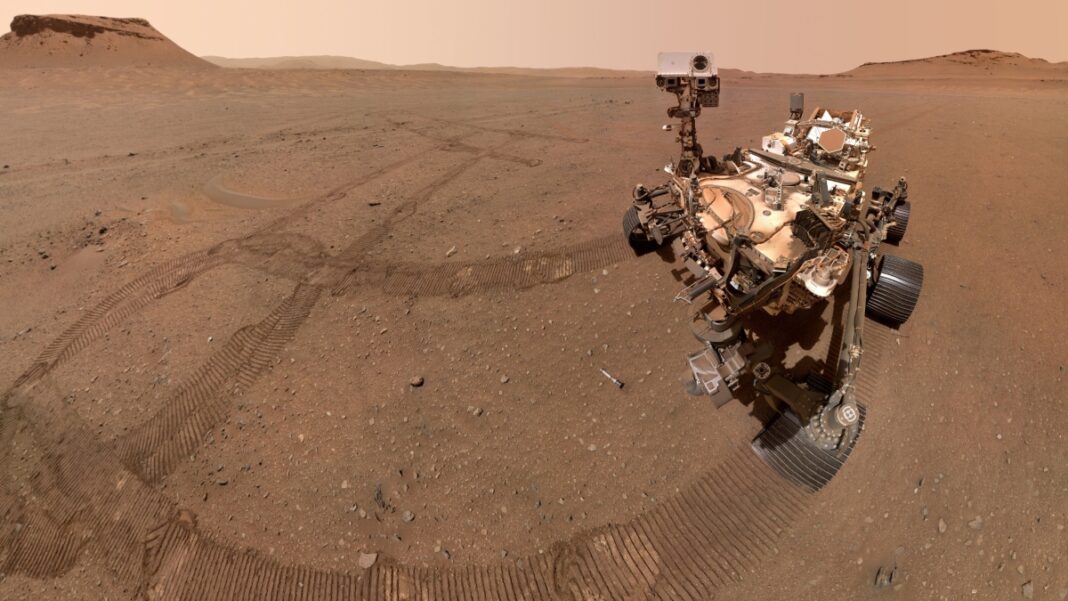UNITED STATES: NASA’s Perseverance rover has reached its second year on the surface of Mars. The rover landed on Mars on February 18, 2021, in the Jezero Crater with its partner, the Ingenuity helicopter.
Perseverance has since made several achievements and collected 15 rock cores and an atmospheric sample.
The primary mission objective is to collect Mars’ regolith material and rock cores, which are essential for scientists’ past research on Mars’ habitable environment.
The rover has filled 18 of its 38 titanium sample tubes, and the samples will be returned to Earth in 2033.
The rover has also established a sample depot called Three Forks to ensure that the samples can be collected if the rover fails to last until 2033.
In order to achieve this, two Ingenuity-like helicopters will collect the depot tubes, one by one, and bring them back to the lander for launch.
Perseverance and ingenuity are not the only robots exploring the Martian surface.
The Curiosity rover, which arrived on Mars in 2012, is exploring the Gale crater, which is about 96 miles wide.
Perseverance has travelled over nine miles since landing and is now exploring the top of the ancient delta.
Ingenuity, the four-pound helicopter, was sent to Mars as a technology demonstrator, tasked with showing that aerial exploration is possible despite the planet’s thin atmosphere.
The helicopter, nicknamed “Mars helicopter,” has completed 43 flights, covering almost 5.5 miles of the Martian surface.
Perseverance’s scientific payload has been used extensively since it arrived on Mars. The rover has taken over 166,000 images, fired SuperCam’s rock-zapping laser 230,554 times, and the ground-penetrating radar instrument has performed 676,828 subsurface soundings.
NASA plans to send a Sample Retrieval Lander (SRL) to Mars to retrieve the samples collected by Perseverance.
ESA will launch an Earth Return Orbiter (ERO) in 2027 to return the Mars samples to Earth.
The rover’s ultimate goal is to search for signs of ancient Mars life, which the samples will confirm once they reach Earth and are analysed by scientists in well-equipped labs worldwide.
Perseverance’s work is complex and involves searching for life on Mars. This objective is complex, and the confirmation of life on Mars may be beyond the rover’s capability.
Perseverance’s team members have stated that the high priority of the mission is to retrieve the samples and get them back to Earth as soon as possible.
The Perseverance project’s lead scientist, Ken Farley, said that the team reflected on and celebrated the rover’s achievements over the past two years.
He added that Perseverance is expected to add more scientific data soon as it begins its next science campaign known as “Upper Fan.”
Also Read: NASA James Webb Space Telescope Unveils Fresh Details in Pandora’s Cluster



